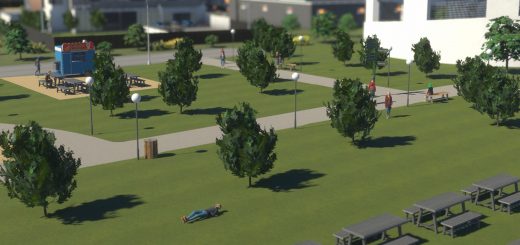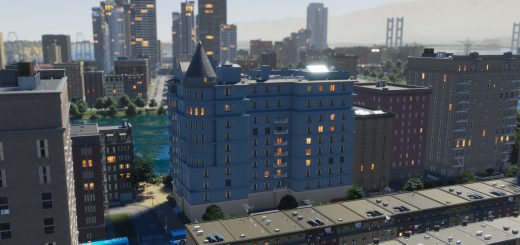Cities Skylines 2: Service Coverage
In “Cities: Skylines II”, services operate through a dual system: a localized passive coverage and a broader simulated effect. The passive coverage is confined to the building’s immediate vicinity, while the simulated effect extends further, facilitated by mobile service vehicles or citizens who visit these establishments. Together, they ensure city-wide service efficiency. For instance, combatting city crime isn’t just about dotting the landscape with police stations. Instead, a police station’s local passive effect diminishes crime accumulation in its neighborhood, while patrolling police cars extend this influence throughout the city via the simulated effect.
LOCALIZED PASSIVE SERVICE COVERAGE
City services predominantly exude a localized passive effect that radiates along nearby roads. Such services and their benefits encompass:
- Healthcare Centers: Confer health benefits.
- Elementary Schools: Offer well-being perks to families with children.
- Fire Stations: Lower fire risks.
- Police Stations: Curtail local crime rates.
- Parks and Recreational Facilities: Enhance overall well-being.
- Welfare Offices: Boost the well-being of less content citizens.
The potency of this localized passive effect hinges on three pillars: range, capacity, and magnitude:
- Range: It signifies the furthest distance, measured in meters along roads, where a service edifice retains its passive influence.
- Capacity: This denotes an approximate number of residents impacted by the passive effect. Yet, its breadth can vary. In less populated areas with sparse housing, the effect stretches further. Conversely, in zones populated with medium or high-density dwellings, this influence quickly wanes, consumed rapidly by dense residential units.
- Magnitude: This is the zenith of the passive service influence. While it maintains peak performance across most of its range, it dwindles towards the peripheries. Here, as an analogy, residents might experience weak cellphone signals or sporadic internet connections. Hence, layering passive service zones can be beneficial to ensure optimal coverage.







